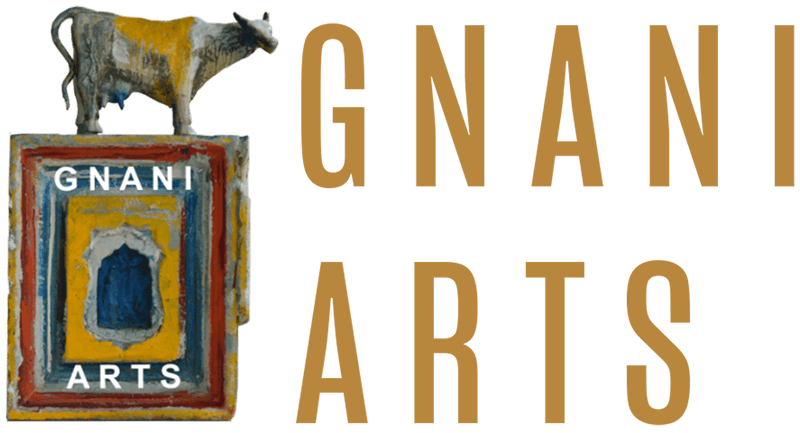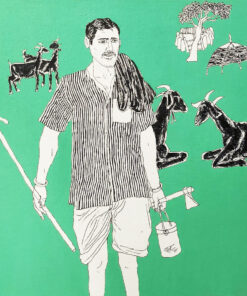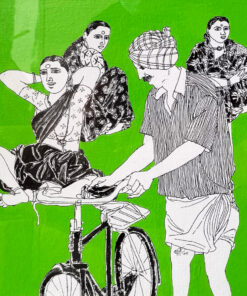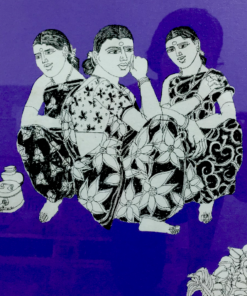LAXMAN AELAY
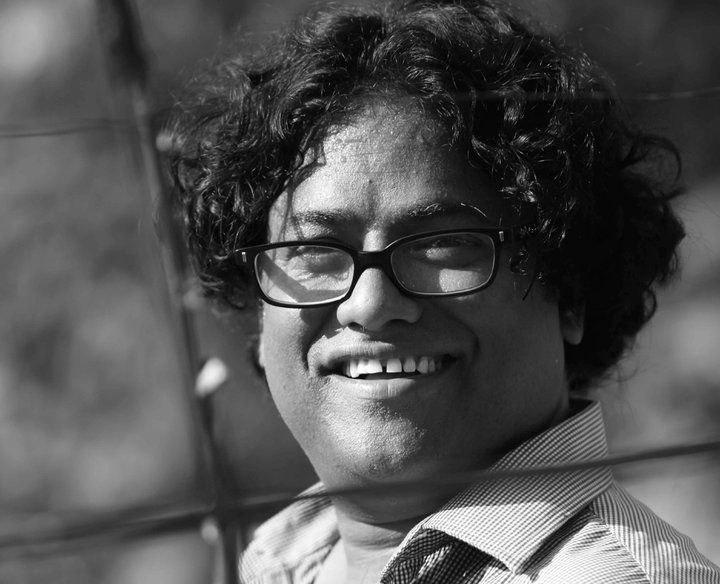
LAXMAN AELAY
Artist
Bio
Laxman Aelay is an acclaimed artist hailing from the Nalgonda district near Hyderabad. His art is a contemporary interpretation of the rustic imagery of Telangana and is a name to be reckoned in Indian contemporary art. A versatile artist, Laxman Aelay has left his mark in a variety of media, ranging from book illustrations to production design in films, but he is most known for his paintings that mark the unique ethos of Telangana’s culture and politics. With modest beginnings as a signboard painter, Laxman went on to become a cut and paste artist with the Telugu daily, Eenadu in the pre-computer era after which he became a much sought-after book illustrator. Belonging to the Padmashali caste of traditional performers who are known as the ‘propagators of herd/flock’, and being raised by a father who was a weaver by profession, Laxman had an upbringing amidst texture, colour, motifs and design. He knew his heart was in painting, and he enrolled for a degree in painting from JNTU College of Fine Arts in Hyderabad despite a degree in commerce, after which he took on painting as a profession. He was awarded PhD for his work on Nakashi scroll paintings and Dalit-Bahujan performative and visual arts in South India.
In his early days as a painter, Laxman Aelay’s work was remarkable in his convincing depiction of the rural milieu that he grew up in and the authentic paintings that are in his repertoire. Using the craft of realism, these nostalgic depictions were a reflection on rural life among poverty which had surrounded him in his native village Kadirenigudem. The paintings were animated by tall dark men in their traditional attire, mostly shepherds, women clad in sarees, with the traditional red dot prominent on their foreheads, engaged in their daily chores, caught in the midst of a mundane conversation in the bylanes, carrying on their head floral bathukammas or chitchatting on their way to markets, with satchels swinging in hand. The women sometimes are depicted with their gaze straight ahead to us, women embellished in heavy ornaments. From the use of shades of white, black and grey, Aelay shifted to using vivid colours which brought a quality of animated life to his works. The women in his depiction brimmed with energy and the flowers, traditional clothing and jewellery reflected a new exuberance in his usage of vivid hues. He has mainly worked with acrylic and graphite in his canvases which have over the years become more compact in nature.
However, in his latest works as seen in his show in 2018 titled Euphonic Myths, we can see a shift from paintings that evoke nostalgia to an active questioning of the same. On his field work for his PhD on a fading art tradition from Telangana, Patamkatha, which amalgamates oral, visual and narrative performances, he had met many musical performers and traditional instruments. He terms these interactions as opening a new chapter for him, and his current work as a mediation on these dying art forms of Telangana. A tribute, as well as a pursuit deeply political in its artistic language, the musicians are not depicted by Laxman as frozen in a slice of time-past, but evolving with time, and different in their specific contexts and environment. He avoids polychromatic renditions, and uses a variant of expressionism to depict a different realism that portrays tanned bodies, the politics of labour and the intermingling of labour with art that gives rise of a politics of resistance in the context of Telangana. His paintings are thus an act against erasure through minutely focused depiction of subaltern communities and their art practices, marooned by the lack of supporting patrons. It is interesting to note that Aelay’s aesthetics is so central to Telangana’s culture and politics, he went on to design the official logo of the state when it was newly formed.
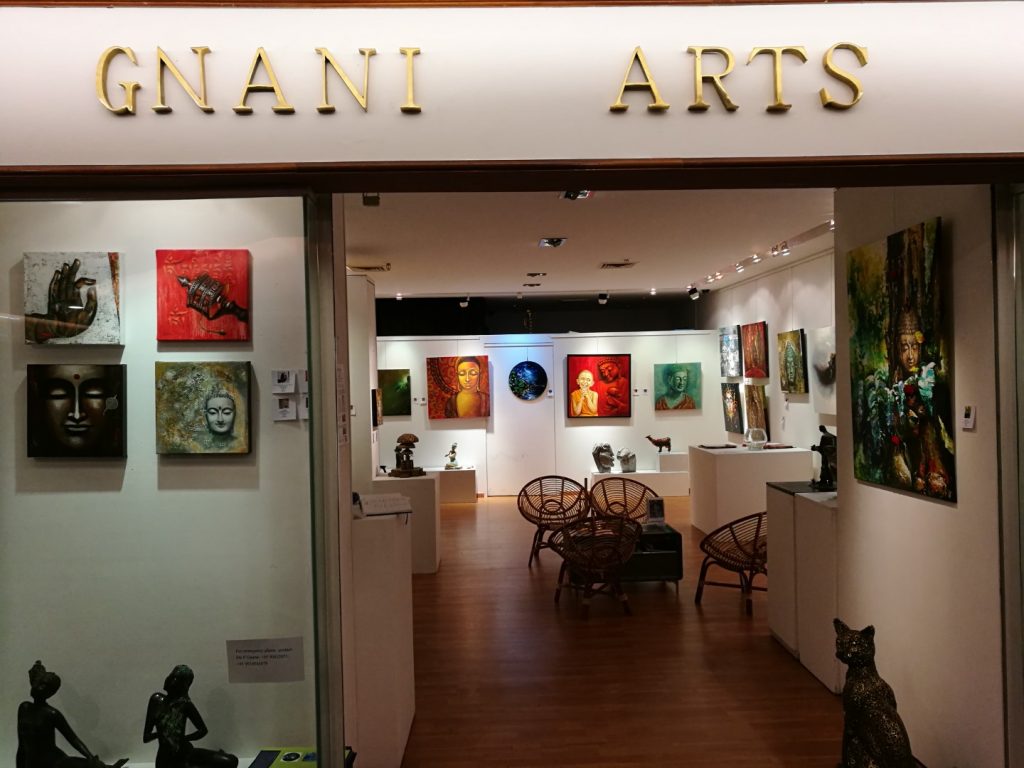
About Gnani Arts
Founded in early 2003, The Gallery of Gnani Arts has been a local and regional trend-setter within its area of research, curation and collection expertise – South Indian contemporary art by masters and international artists. Apart from curating and marketing its primary collection of art by masters and senior artists, the Gallery continues to launch the careers of a selective number of artists from Singapore (where it is based) and from other parts of the globe. Clients of The Gallery of Gnani Arts include the Singapore Art Museum of the National Heritage Board (Singapore) and numerous corporations and individuals in Europe and Southeast Asia.
Read More